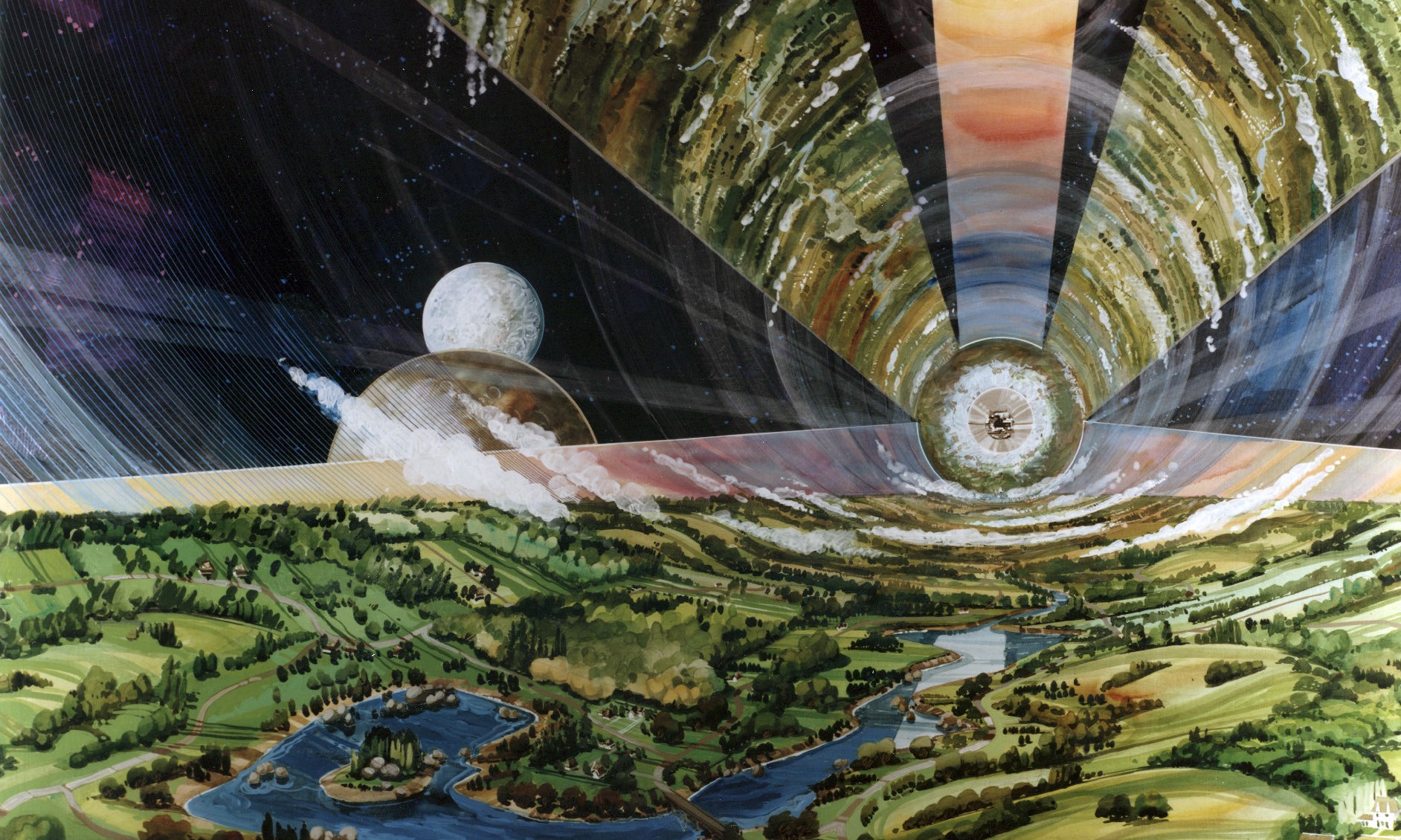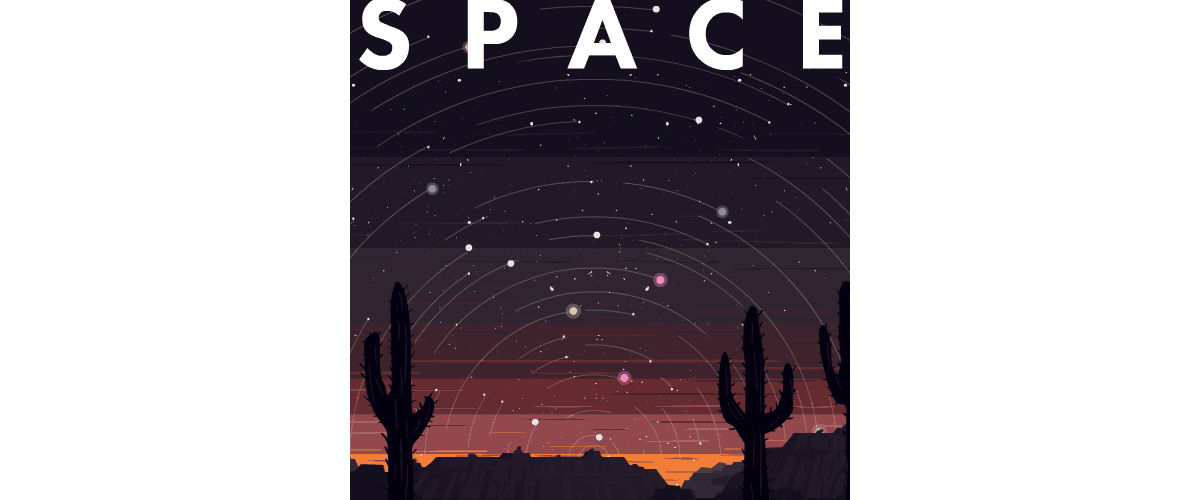

In 1968, Buckminster Fuller published his not-very-large magnum opus, Operating Manual for Spaceship Earth, a title which exemplifies his idiosyncratic pragmatism. It was the time of Stewart Brand’s countercultural Whole Earth Catalog, and both products were deeply affected by the cultural and political concerns of the era–from the Earthrise image (its anniversary this year was widely covered as inspiration for the Catalog and other environmentally conscious projects) to Gaia (hippies and the theories of environmentalist James Lovelock). But Fuller’s book was much more portable than the Catalog, easily kept in a glove box, and his plans for efficient interdependent structures were very distinct from Gaia’s feminine, spiritual associations. The spaceship of Fuller’s Operating Manual is not a manmade one but Earth itself, and that Earth is machinic rather than unbounded and organic, hurtling its teeming life through the void.
In Operating Manual for Spaceship Earth, Fuller does not think about space as an escape. Because travel to the nearest star system would take so much time, scientists today locate the best possibility for its undertaking in generation ships, first described by golden age science fiction writers and later adopted more broadly. (It’s either that or bending the fabric of the universe into wormholes.) These still-hypothetical spaceships would be designed like cities, capable of generating and sustaining the necessary resources for humans to live multiple reproductive cycles in an artificial environment. More than a half-century ago, Fuller argued that the Earth is already a generation ship. With the amount of resources space travel would require, why not commit to a similar plan for sustainable, holistic management here on Earth? “We are all astronauts,” he writes.
But is it even possible to comprehend the world in its totality, much less see that comprehension spur real transformation? When I consider the utility and futility of our collective encounter with images such as Earthrise (spurred by a conversation with writer Ingrid Burrington), I wonder how heralding their humanist optimism distracts us from the fact that we haven’t devised different ways of living. As contemporary architect Greg Lynn, who designs virtual space cities, observed to the Canadian Centre for Architecture for their 2010 exhibition, Other Space Odysseys: “It was as much about the television as it was about going to outer space.”
I, too–paranoid of positivity–am suspicious of Bucky’s specific charms. I first became interested in him because of the domes. Fuller patented and popularized the geodesic dome in the 1940s, in order to provide an easily replicable structure that he believed could alleviate housing shortages. Making habitable structures with minimal resources is an important project, but he and I do not agree on even more basic tenets. For instance, Fuller calls for the “reorganization of humanity’s economic accounting system and its implementation of the total commonwealth capability by total world society, aided by the computer’s vast memory and high speed”–that is, hegemony and automation via supposedly rational systems that are in fact extant human ones, only more obscured. I, instead, want to turn to human thoughts and ways of life long obscured (and beyond Fuller’s area of vision) that do not require a supercomputer or superstate to actualize. Operating Manual for Spaceship Earth is really fun, but the book is also bonkers and just wrong in a lot of places, poisoned by modern colonial orderings of progress and exclusion. Most wrong is the way that Fuller places men of action and pragmatism, scientific heroes whom he links back to the “sea masters” of early European exploration, at the center of his story of intellectual development.
It’s hard to say how Fuller would position himself today, but many of his ideas have since drifted into techspeak. (“Synergy,” for instance.) I’m sure that it’s only a matter of time before I look up on the subway and see an ad for an app called Dymaxion–a portmanteau of dynamic, maximum, and tension, which Fuller used to describe the ability to make complex systems operate with the least amount of energy input. “Dymaxion,” I imagine the ad reads, “an international crypto-transfer program that also sends you socks on the first day of the month.”
In 2017, I participated in a summer graduate program called “Planetary Futures” at Concordia University. There, we were visited by a member of the European Space Agency, who asked us to form small groups and develop a plan for traveling to Mars. He wanted us to think pragmatically. Who would the crew consist of? What would be the operation objective? We were, most of us, cynical students who–through personal inclination and graduate study–came to the project with sharpened skepticism. My group in the end created a plan called: “Operation Manual for Stayship Earth.” The astronaut was not impressed. In fact, he was a bit insulted.
But the stayship is not a rejection. (Though it may be a bit of a refusal.) When scientists, designers, and researchers think about either space contexts or the extreme/particular case, it’s often also useful for the here and now. Astrobiologists study extreme cases of life on Earth in order to speculate on what other planetary life might be like–and, in the same way, speculative fiction writers, speculative thinkers, and world builders more generally use the prompts of space travel and habitation to consider the difficulties of making life more livable here on this planet.
The architect and artist Alessandro Poli, part of the Italian collective Superstudio, was a European counterpart to Fuller. Most active in the 1960s and 1970s, Poli thought along similar lines about space cities and new forms of education suitable for space life. But in his broader interest in a transformation of all social relations, he admits his utopian impulse in a 2008 photomontage, Zeno incontra Aldrin a Riparbella. In it, Poli imagines neither pirates nor conquistadors as the first astronauts. Instead, it is Zeno, a farmer he meets in the countryside of Riparbella, whose sustainable form of farm living makes him, in Poli’s eyes, an astronaut of the soil, his little shed in the country likened to “Aldrin’s space capsule.”
In posing Earth as spaceship rather than living matter, Fuller misses the spontaneity of dynamism and creation itself. Decay is necessary. (There are not enough images of a dirty future. Enough with white interiors and gleaming surfaces!) I have the sense that we, the crew of Spaceship Earth–seduced by the gleaming future of automation and efficiency that Fuller espouses–may soon experience our own Solaris moment: the sudden realization that the (presumed) inanimate ground is alive . . . and disturbed.


How We Get To Next was a magazine that explored the future of science, technology, and culture from 2014 to 2019. This article is part of our “Space” Beat, which asks: If humans are to leave Earth and become an interplanetary species, whose vision of the future will be realized? And who will get to be a part of it? For more dispatches, click the logo.
